The Real Market With Chris Rising – Ep. 25 Brenden Millstein
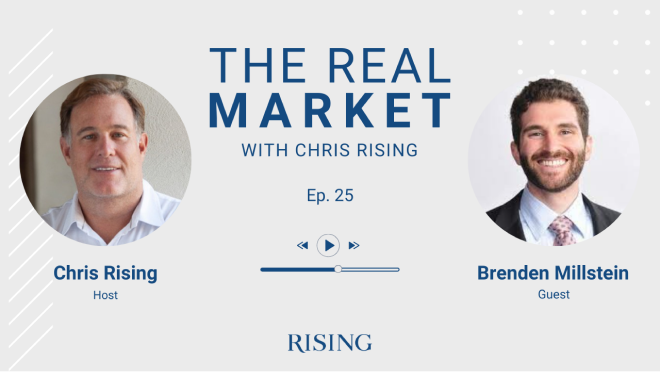
The Real Market With Chris Rising – Ep. 25 Brenden Millstein
Podcast: Play in new window | Download
00:01 Chris Rising: Welcome to The Real Market with Chris Rising, the only podcast that brings the real estate conference panel to your headphones. You’ll hear from superstars from every realm of commercial real estate: The biggest brokers, the most well-known architects, the largest investors and the most visionary developers. You’ll learn what they do, how they do it and what drives their success. We’ll discuss the latest trends across regional markets, capital flows, both national and global, and we’ll explore technology’s role in shaping all of them. We’ll take a clear-eyed look at where we’ve been, where we are now and what’s to come. Real conversations, real experts, real insights. This is the Real Market.
00:49 CR: Welcome to the Real Market. Today I am having a really interesting conversation with Brenden Millstein. Brenden is not someone that you would think he is until you talk to him. He’s really amazing. He is a physicist by training. He’s also a break-dancer. He’s a jazz musician. He’s a father of two and he’s got a company that has had more than 50% year-over-year growth over the last nine years, and it’s all around climate change and carbon reduction in buildings. So it’s a great conversation. It’s really funny, we got some funny stories. I think you’re really gonna enjoy it.
[music]
01:29 CR: Welcome to The Real Market with Chris Rising. I’m excited to have Brenden Millstein here with me today. He is the CEO and co-founder of Carbon Lighthouse, and we’ve been working with Carbon Lighthouse recently and I’m really excited to have him on. Brenden, welcome to the podcast.
01:45 Brenden Millstein: Yeah, thank you so much, Chris. It’s a pleasure to be here.
01:48 CR: Well, I just wanted everyone to know that we work together on a project and we hope to be working on a lot more. But why don’t you tell our audience a little bit about Carbon Lighthouse.
01:58 BM: Sure. Carbon Lighthouse makes it profitable for commercial real estate investors to cut their carbon emissions. So we developed a way to cut energy waste on-site, which is dramatically more cost-effective than it has been possible before. And then we’re actually able to pay rent direct to landlords. So there’s a very tangible revenue benefit and profit benefit for the landlord and investor and a significant reduction in carbon emissions out of all the sites.
02:30 CR: Well, let me ask you this, since I’m very focused, and our company is very focused on carbon reduction and are true believers that you can use impact as alpha to create value, but there are a lot of skeptics out there. You go to parts of this country and people just do not think that carbon reduction is something we should be worried about or concerned about when it comes to creating value in an office building, much less in terms of climate change. So I wanna kinda just start the conversation and ask, when an owner does this, are they really creating value in their building?
03:07 BM: Yes, absolutely. But before coming down on that point strongly, I first wanna recognize that I think the skepticism is very merited and so I always like to start from a premise that markets are not crazy, that people are not crazy. They’re actually quite smart and quite good at what they do, and there’s an interesting discrepancy in commercial real estate and sustainability or energy efficiency projects that comes up that I think is worth exploring. So a typical real estate firm would be pretty excited to return more than say 15% to its equity holders as a return on investment or cash-on-cash return. That would be a pretty good return to equity for most funds. And what you see in the market is there is often a requirement for energy efficiency projects or renewable projects to have a three-year payback or even a one year payback, and that’s wildly different than a 15% return on equity.
04:10 BM: And so the question is, why? And this is where I think the skepticism is really merited, which is this disconnect exists not because people are crazy, but because the energy industry and the sustainability industry has for half a century not been delivering what’s promised, and there’s this three-year payback period requirement for most firms, because most financial benefits from efficiency projects die very quickly over time. And there’s a number of studies that confirm this. The one I like the most looked at six years of data from before and after 2000 projects in 2000 non-residential buildings in the US. And it found, just three years after the project was done, only a quarter of what was promised to the client was actually being delivered, and that’s really abysmal, actually.
[chuckle]
05:06 CR: Mm-hmm.
05:06 BM: Can you imagine going to a gas station and filling up with gas and then going back to your house and discovering you only had two gallons in your tank? That would be outrageous. And yet we see that time and again in industry, and so if you reasonably expect what is promised is not going to materialize, you’d better have a different payback requirement than you would for a regular lease. So, I wanna recognize that skepticism is very merited, and we at Carbon Lighthouse actually took, somewhat ironically for a company that is sworn to stopping climate change, we actually took our strategy book quite a bit from oil and gas. And there’s a very specific thing the oil and gas companies do, which I think is very admirable, which is you only pay for the energy you’ve used, and it’s very measurable. So if you go to a gas station and you pump what the machine says is a gallon into a bucket, and that bucket is only half full and it’s a gallon bucket, you have someone to sue. And so, at Carbon Lighthouse, we actually do the same thing with our contracts. So we guarantee we will deliver a financial value above a certain threshold, and we measure it, and if it’s not there, we write a check to cover the difference.
06:23 CR: Wow.
06:24 BM: So I would say… Yeah, and obviously, we don’t like to do that, but it comes up, and in the past 600 buildings we’ve worked in, we’ve had to refund about 1% of our total revenue, ’cause mistakes and misses do happen, but it’s pretty good. And so I would say for our landlords, yes, absolutely, they’re adding alpha, absolutely they’re getting a very good return to equity, but we are sadly not… We are not in good company in doing this work. We’re basically all alone in being able to deliver a very secure financial return to the landlord.
07:04 CR: Well, you know what’s interesting to me about all of this is we’re currently on the market raising a fund focused on impact, and carbon reduction is a big piece of that. But what I find so interesting, you’re talking about commercial real estate that produces about the numbers that I’ve seen 30% of the carbon in the world, so really behind the cargo ships that go across our oceans. I mean, commercial real estate is producing a lot of carbon and having a lot of impact on climate change. But yeah, the message… Maybe it’s because we have a real estate developer as president who says climate change is a hoax, and I’m not quite sure, but when you start thinking about the sheer size of the carbon that’s being produced and then you put on top of it that most of the building supply is not gonna be torn down and built over, and I guess for those of us who care about climate change, you really don’t want that, because the most emissions actually come when you’re building a building the first time, when you think about all the trucks and steel that’s produced and all of that, you wanna be able to repurpose buildings.
08:14 CR: But yet, time and again, I’ll be in front of people who think they’re saying, “Well, I just don’t want… I don’t want to be really interested in these impact strategies because I won’t give up one bit of return.” And sometimes you just feel like you’re talking to a wall, and you’re telling people, “Do you understand that a more efficient building means that you keep more of the rent?” [chuckle] And over and over again, people don’t understand that. So how do you look at it? The mission that you’re on to help in the climate change crisis and the company that you formed. How do you look at it in describing to people outside of just the landlord but to the industry about why this is so important and why this really does make sense?
08:55 BM: So the first thing we do actually is everything we do at Carbon Lighthouse is driven by an environmental motive, but our clients don’t need to care at all whatsoever. So I’m very excited by our work together because you care about both the money and the CO2 reductions. That’s very satisfying, but as long as you care about the money, that’s actually enough, so [chuckle] from Carbon Lighthouse’s perspective that we work extraordinarily hard to make the financial value we deliver to clients very recognizable and bankable, so that when our clients sell a building two years, three years after they work with us, the NOI we’re delivering gets cast at disposition. And so we have a couple ways of making sure that happens and making sure it’s visible.
09:46 BM: So the first is the contract guarantee. And clients don’t have to trust us. We’re actually back-stopped by Munich Re Insurance, which is one of the largest insurance companies in the world. So if we miss on savings, there’s a few tens of billions of dollars behind us that’s guaranteeing it, but the other thing we do is we actually pay rent to the landlord. And so this is something that the phone companies have given us as a gift, which is often when you wire a building for high-speed ethernet, so with Comcast, with Time Warner Cable, those companies are paying an access fee to the landlord so that they can access their wires that are delivering tenants the service of high-speed ethernet. And from Carbon Lighthouse’s perspective, we actually took a very similar contract to that or a very similar access agreement to what Verizon or AT&T signs with the landlord when they put a cell antenna on the roof.
10:42 BM: And so that access agreement lets us say something like, “Hey, in this building, we will guarantee, we will save a quarter of a million dollars a year and it’s gonna cost $200,000 a year to do that. Now, all of that gets passed through the tenants. So net tenants are saving 50K a year, but, landlord, we need access to the sensors we install in the mechanical rooms to deliver the service that’s gonna save tenants 50K a year. So we’ll actually pay you $100,000 a year in exchange for access to our sensors in the mechanical spaces.” And so this way… Yeah, so this way tenants get 50K a year, and the landlord gets $100,000 a year of top line revenue, and Carbon Lighthouse gets $100,000 a year. And the only loser in the transaction is the power plant whose quarter of a million dollars it is we take each year, which is literally the point of the whole company. [chuckle]
11:41 CR: That’s amazing. Well, I’ve had a lot of different people on my podcast. A lot of them come from the brokerage side of the business and others from the law side of the business. But you have a very different background. Can you tell us a little bit about your personal life a little bit? Where you went to school and how you got into basically fighting the climate change war one office building at a time?
12:06 BM: Sure. Ideally, we do it a couple hundred office buildings at a time, but first things first. [laughter] So, yeah. I’m a physicist by training. So I started Carbon Lighthouse with my physics lab partner from Harvard, where we both went to undergrad together. Actually, Raphael and I grew up five blocks apart and have been best friends since we were about four years old, So many, many decades now, which has been extraordinarily fun and rewarding. And I got into… I really became passionate about stopping climate change actually in high school. So my high school was a little bit chaotic. In my four years, we had six principals, we had 20 fires, one of which burnt down a building, and I pretty much gave up on trying to make low-income education work. But my senior year of high school, I took a nuclear engineering class at UC Berkeley and just fell in love, as one does, in nuclear engineering. But it was… Yeah. So here is this way to use math to improve the lives of billions of people, and very unlike education, the financial incentives were a lot. We could just hand people money to do the right thing for the planet, and that was very appealing to me. So that’s what we do at Carbon Lighthouse. We hand people a monthly rent check in order to let us take a whole bunch of money from power plants and split it with them and their tenants and keep some for ourselves.
13:43 CR: That’s amazing. So when you came out of school, you came out of school with Harvard and then you went to Stanford with an MBA and an MS in engineering. What did you do for your first job? What was that first step on the path to lead you where you are today?
13:58 BM: So I had a great first job. So I was a state government employee for New York. I was based in Manhattan, and the rest of the team was up in Albany, and we had this $90 million budget to cut energy use in New York City. And the basic problem we were solving… This was back in 2006. And so the problem was the island of Manhattan was transmission constrained, and it needed more power than it was getting. And so you either had to find some land in northern Manhattan or something where you could pop a little power plant down. So that’s never gonna happen, or you could build more transition over from New Jersey, so that’s gonna take 10 years. Or you could pay a bunch of engineers to figure out how to cut power in the city. And so I was one of those engineers who was tasked with figuring out what commercial buildings could do to reduce their energy demand and then paying them to do so. And what made this job so great was that I was this 22-year-old kid with seemingly no oversight because the rest of the team was up in New York, and everyone would meet with me. [chuckle] ‘Cause like here’s this mark, with this huge budget.
[chuckle]
15:14 BM: And I had three bosses at the same time, which you’d think would be a disaster, but they were actually all just incredible engineers, and really good mentors. And because I was remote, having three was very helpful because I could always reach one of them when I needed help or guidance. So it was this incredible learning experience for me, we were very successful. When I left two years later to go to grad school, the state actually ended up I think quadrupling our budget to more than a quarter of a billion dollars, and I worked with hundreds of buildings in New York City and that’s really where I started learning about real estate and how building systems fit together in a much more tangible way than a theoretical physicist.
16:00 CR: Well, you must have some stories. I’ll pass one on and see if it rings any bells for stories for you. We bought a building once, that we were very proud of the fact that it had a very, very high energy star rating and really took that, we were doing our diligence, and said, “This is great. It’s got this very high-energy star rating.” Then we didn’t really put two and two together. The building was about 50% leased and then we owned, we got to own the building and we started saying, “God, there’s some problems here, with this building that we hadn’t anticipated. They don’t have… They have six elevators but there’s never an elevator available,” and then we started really peeling back the onion. [chuckle]
16:38 CR: And what we figured out was they got the energy star rating because they shut down elevators. [chuckle] And the building was half full. So as the building got more full and we opened up… We had to be more creative and we were able to keep the energy star rating, but it was such a game that was played. It was a real lesson to us that, two things, one was positive, one was negative, but the negative was, boy, when you’re doing due diligence that you have to really go into those things. But the positive thing was that what we learned was, it’s all about changing tenant behavior on their energy use when you’re trying to keep an energy star rating like that. So there was something good came out of it. But I have to imagine in Manhattan, you must have had some amazing stories about how buildings were operated and their energy use and such.
17:25 BM: Actually, I think the most fun behavioral change my group did was there was a plant, just north of the city, so not in Manhattan, but north a little bit, but on the same transmission line, and it took giant boulders and it crushed them into gravel for concrete and they had these huge machines which just crushed boulders. And we found 20 megawatts of power, so that’s the size of a small power plant, basically, this one rock-crushing plant used. And the margins for rock crushing, it turns out, are very low, that’s a surprisingly competitive industry. It’s a very well developed efficient rock crushing industry…
[chuckle]
18:11 CR: It’s unbelievable. I had no idea.
[overlapping conversation]
18:14 BM: Yeah, so we were able to approach them and be like, “Hey, guys, six times a year, when we really need the juice, can you just stop crushing rocks for three hours and we can give you hundreds of thousands of dollars?”
[chuckle]
18:28 BM: And they were like, “Yeah doesn’t matter to us when we crush the rock.”
[chuckle]
18:33 BM: And that was a very, very successful Demand Response Project. So that was pretty fun and I got to learn about rock crushing.
[chuckle]
18:43 CR: So you went from being a civil servant, and the government job, and then did you go to grad school from there?
18:49 BM: Yes, so then I went to Stanford for business school. Ultimately, I got frustrated with my inability to reduce emissions outside of New York State Bounds, ’cause I was a state employee, and my goal of going to Stanford was to find a clean energy company that was cheaper than coal on an unsubsidized basis and help it expand. And I got to Stanford, I enjoyed Stanford so much I added an Engineering degree while I was there, to extend my time there, but then we ended up starting Carbon Lighthouse while I was still there, so everything got compressed into two years, so my last semester was a little nutty trying to wrap up two degrees and get a company off the ground, but the premise behind Carbon Lighthouse is, that was and is today you know, we need to be cheaper than fossil fuels, no subsidies, no policies required, it needs to be strictly private sector solution, ’cause that’s the only thing that can scale really quickly, and we need to do really profitable work for our clients that is also very profitable for us ’cause otherwise we will never be able to grow large enough, quickly enough, overall, to actually stop climate change.
20:04 BM: So we launched in 2010, I finished Stanford in December 2010, and since then, we have grown a little bit faster than [20:14] ____ so we’re doubling revenue, and impact every year for nine years running now, we’ve eliminated six power plants, we have another nine power plants worth of emissions under contract, and that leaves us about 50,000 left to go to stop climate change.
[chuckle]
20:32 BM: So I think there’s some work ahead, but if we keep doubling every year or so for the next 20 years we will get there before it’s too late.
20:41 CR: And when you say you closed, you mean literally closed or you mean just the numbers of reduction means that you’ve closed a power plant?
20:48 BM: The… Yeah, the emissions equivalent.
20:50 CR: Yes.
20:50 BM: Of the six power plant.
20:53 CR: You’re not stealthily going out at night and shutting those down?
[chuckle]
20:58 BM: No we’re not… We’re not Greenpeace, we’re a much more investor friendly approacher.
[chuckle]
21:03 CR: That’s great. Well, let me ask you this, your company now is doing business between Hawaii and San Francisco all through at California Boston and DC. How many employees do you have now?
21:15 BM: There’s 85 of us. So our headquarters are in San Francisco, our next largest office is in New York and we have a Hawaii Office as well which I highly encourage any and everyone to go visit, it’s a wonderful place to do business and we’ve actually been… Our sales team has been more effective than we anticipated in the last couple of years which has been wonderful, so we’ve actually stopped doing as much business outside of our main hubs of Hawaii, California and the Boston to DC corridor, so we’ve been expanding there very quickly and then in another year or two we’ll be able to get back to Chicago, and Dallas and Florida more where we also have done work in the past.
22:06 CR: Well let me ask you this with that number of employees, 85 employees spread around how do you operate your business? From a… Putting on your business owner hat and trying to be a leader for your team, what do you use? I often ask people what do they use a project management software or they’d be old school email I would doubt very much if you guys operate purely on email, but what are some of the efficiency software tools that you all use to communicate?
22:34 BM: You know, call me old fashioned, but we operate very largely on the phone so email I can take or leave. Generally, I think it’s a terrible way to communicate. I don’t understand how people got business done before there was phone line. So we do video conferencing a lot which is great and it’s helpful, when everyone is sitting somewhere with a laptop and good WiFi, but oh, my Lord, can you get a lot done on a three to five minute call that could have taken you 10 hours to get across in email. So yeah, we love the telephone over here. I also like face-to-face meetings too but obviously that’s hard when you’re not all in the same place. But yeah, phones I think that’s the most underrated business tool that exists.
[chuckle]
23:28 CR: Well let’s talk a little bit about the technology that you actually use in buildings, because I think it’d be interesting for our audience to understand, okay, someone hires Carbon Lighthouse. Seems like a good deal for both sides. But what is it that you’re doing when you come into a building? What technology are you putting into place that allows you to have the success in reducing carbon?
23:48 BM: I would love to talk about those questions. So the basic premise of the company is actually one of humility, which is if we have the same information as everyone else we can’t hope to be any different or deliver any different results. So the first thing we actually do is go into mechanical spaces and on the roof and install a network of sensors, and this lets us get just a huge amount more information than has ever existed before in building. So we get flow rates, air flow rates, chilled water flow rates, heating water flow rates, electrical flow through every major circuit in the building, occupancy, light levels humidity, pressures throughout the HVAC systems, just this huge amount of data and even a building that has a brand new top of the line-building management system we’re typically getting 100x to 1000X the amount of data that would come out of that VMS.
24:50 CR: Wow.
24:51 BM: And this is, it’s a heap of data so we wrote quite a bit of software to analyze it largely automatically now, both machine learning, artificial intelligence stuff and also some more traditional thermodynamics physics tools. And what the data lets us do is figure out two things. So the first is, what are all the one-time changes that can be made to the building to cut energy use and then the second which is typically where half to 80% of our savings come from, is all the ongoing optimizations we can do and so to make that tangible, basically if there’s low hanging fruit, like lighting retrofit left, we should do those so we can meet the building where it is, but the main thing with the one-time changes is that all the software in the world doesn’t help you if the facility’s chief has to walk over to a valve and change it by hand, to change how a pump is operating. If there might be 120 valves in a building. So the chief can’t just be walking around changing valves every minute.
25:58 BM: So, we’ll wire all of the major systems into a central control system if they’re not there already, and then the data lets us in real time make trade-offs, and so this is something that wasn’t possible to do 15 years ago ’cause computers were too expensive and not fast enough, sensors were too expensive, but now you can buy a super computer for 600 bucks, and so we’re making all of these little trade-offs like turn a pump up which has a little penalty but that will let us turn a pump down unless that will save 25% and then 10 minutes later as the weather changes and people walk around the building it makes a new automatic adjustment. So you can kind of think of it as like getting your car tuned up but automatically in every 5 minutes.
26:48 CR: So I’m a big fan of Ray Kurzweil and really do believe in exponential growth. If we are moving along the lines that it looks like we’re moving on, how do you envision a building, which most of them will more likely be existing buildings that we adapt a reuse to ’em or something, what do you think a building is gonna look like in five years or 10 years in terms of how efficient it is?
27:14 BM: So this is one of the most fun elements of the company and how we’ve set it up, is our software, called the Clues, it’s doing all these trade-offs automatically. And we have a group called the Building Innovation Group, or BIG, which we’re very pleased with ourselves on that acronym there.
[chuckle]
27:34 BM: But the Building Innovation Group is constantly looking at every new piece of technology and way to cut energy costs in buildings. And because of our software, once we’ve modeled one of those technologies once, we can then apply it to every building in the portfolio. And so batteries, for example, we’ve been looking at for years and finally just got our first building where it’s cost effective to put in batteries; done. And so as all of these new technologies come out, we just found a new way to replace steam traps, so buildings that heat with steam, this is a big way to save energy. And so we can, all of a sudden, we can apply that to dozens to a hundred buildings that we have worked with on the East Coast. And so every time these new technologies come out, our software lets us apply them specifically to every building in our portfolio. And so five years from now it is our hope we can be delivering 50% or even 100% more energy savings than we’re delivering for clients now. Which is pretty good, ’cause we’re already delivering typically between 10 and 30% whole building energy savings, but without any major construction and without any major equipment replacement.
28:55 CR: Well you know, what’s interesting in what you’re saying, and especially when you’re talking about battery finally getting there is, I think one of the biggest things that’s slowing us up are the building codes in the city governments, because we’ve tried to put in batteries in certain projects and cities just say, “Nope. I want you to have a diesel generator; we won’t approve it otherwise.” How do you see the learning curve with the cities and municipalities as it relate to reducing carbon?
29:23 BM: Yeah. I think it depends a lot on the city. Generation devices are different. They tend to get more scrutiny because they create electricity, so that can trigger lots of things like fire code, which it should. To be fair to cities who are concerned about batteries, lithium ion batteries were spontaneously catching on fire as recently as last year. So it’s not necessarily bad from a life and safety perspective to go a little slowly and cautiously with things that actually create electricity. So I do want to be a little careful throwing cities under the bus there. That said, cities can be very, very slow to change policy when it is unnecessarily slow. From Carbon Lighthouse’s perspective, we’ve actually designed the whole firm to work around this issue, which is because our mechanisms are delivering savings is primarily to make the existing equipment work better. A lot of our projects don’t even need permitting ’cause we’re not actually installing new equipment. We’re just adding read-only sensors which don’t need to be permitted, and then re-programming how control systems work with better software, and so that lets us move very, very quickly. Whereas when we do solar at some sites, and then there’s obviously… That can be permitting delays up the wazoo; same deal with batteries. But a lot of what we do doesn’t need permitting at all.
31:03 CR: Interesting. Well, one of the things, as you were talking about the sophistication of your business, it’s astounding to me how you’ve evolved just from our first conversations a year or two ago, but I have to imagine it didn’t start this way. You guys came out of… You were still in school, you start your business. What have you seen in the growth of your own company and your own team from when you started it? And are there any interesting or funny stories about when you first started your business?
31:33 BM: Oh yeah. [chuckle] I will not pretend that everything was roses right out of the gate. We launched the company. This was a totally foreseeable problem which we did not foresee at all whatsoever. But we started the company. The first thing we did was start trying to sell the customers. So we called a friend of a friend of a friend of a friend asking, “Hey, do you own or manage commercial real estate? Do you know anyone who owns or manages commercial real estate?” And we made more than 1000 phone calls in the first two months, and finally won our first client. And the one thing we cared about was that we were going to align the financial motive for ourselves and our customers with the environmental benefit we are trying to deliver, which means our contract is structured where it says, “Hey, we’re gonna charge a fixed monthly fee, and we deliver savings above a threshold, and if we don’t hit that threshold, we refund your money. And if we do hit that threshold, or above it, client keeps the difference.” So basically, when we deliver environmental benefit, we make money, and when we don’t, we don’t make money.
[chuckle]
32:46 BM: So, this contract we signed… Our website is horrible, ’cause I made it.
[chuckle]
32:55 BM: And I’m a physicist. [chuckle] I have no idea what I’m doing. I’m not a graphic design artist, I don’t know how to communicate well to people. [chuckle] Like, this is a disaster. We had no track record, no customers, no real experience. And so, the first person who signed with us… This isn’t what we foresaw but it was foreseeable. This is someone who is not risk-averse. And who cares greatly about the environmental mission, and that exact person is someone who will have worked with every other energy efficiency company they could find, ’cause they not risk-averse and they care about the environmental mission. So we sign this contract, we get to the building, and this building is perfect. There the low-hanging fruit is gone, the medium-hanging fruit is gone. The equipment is brand new. They’ve worked with 10 other efficiency companies. There is no way to improve this building.
[chuckle]
33:51 BM: But it has just taken us more than a thousand phone calls to win a customer and sign this contract. We’re like, “Well, we gotta make it work.” And we have $10,000 to our name. We are two nerdy, panicked physicists, and we’re like, “Alright, let’s get $2,000 worth of sensors, measure everything, pray someone missed something in the data.” And, sure enough, someone had missed something in the data, and the control system thought it was turning off a fan at night, that actually it wasn’t, ’cause some relay was broken, and we were able to fix it. And it was a big fan, and so it actually saved like 3% of the whole building energy. And “whew”
[vocalization]
34:32 BM: Eked out a little bit of a win there.
[chuckle]
34:34 BM: And then it was very slightly easier to sign our next contract, ’cause at least we had one reference customer that was like, “Yeah, they were pretty good, saved us some money.” [chuckle] And same thing happened. Low-hanging fruit gone, medium-hanging fruit gone, equipment brand new. But this time, we had $20,000 to our name, so we got $4,000 of sensors. And similar deal, found some pump that was running when it didn’t need to be and turned it off. And that actually ended up being a disaster, ’cause it turned out that you did need that pump when it was more than 100 degrees out. And we found that out when it was 105 in Sacramento, and all of the AC tripped off. And there’s a federal court in this building, and [chuckle] this is when I learned you can actually be held in contempt of court for turning off the air conditioning to a court when it’s 105 degrees out.
35:29 CR: Oh my God.
35:31 BM: Yeah, thankfully, we were not held in contempt of court, and we fixed it and we could turn that pump off 95% of the year. But basically, each time we won a new building, our system got a little bit more sophisticated. We were able to find more savings, we were able to learn from problems like that. And we started having these 300 megabyte Excel file, which was such a disaster, but a few years went by and we hired real software developers and data scientists, and now everything’s up in the cloud, and the analysis is very largely automated in some pretty amazing ways. And our software’s patent pending, and a whole lot of good has happened. We haven’t tripped off any AC for years and hundreds of buildings now. [chuckle] So, that’s good, but, yeah, this was not a… The early years were not exactly a smooth ride.
36:29 CR: Well, I do have to call you out on your self-description of being a nerdy guy, because I do know that you’re also a musician. So I have this image of you being in a jazz club late at night with some smoke in the room and a stiff drink and just jamming away. Is that… I think that there’s your salesman-y stuff comes out in that. But tell me a little bit about your love of jazz.
36:56 BM: Yeah, sure. So, that’s right. I’ve played in many smoke-filled rooms. I started gigging when I was 14. So I played jazz saxophone, or played more accurately. And it was pretty serious. Actually, I needed… I have two older brothers, and I needed my oldest, oldest brother’s ID to get into bars to gig, and he’s 11 years older than me, so when I was 14, I had this ID that said I was 25, so I could get into bars to gig.
[laughter]
37:27 BM: But yeah, so I’d go to these bars and the bouncers would be like, “There’s no way you’re 25.” And I’m like, “Yeah, of course, I’m not 25. I’m not even old enough to want to drink yet. Just let me in so I can play my gig.”
[laughter]
37:39 BM: Which that line, actually, that line killed, that always worked.
[chuckle]
37:43 BM: But yes, I played a lot in high school. I was very fortunate to play with some incredibly talented musicians. So we went on tour in Japan, and Switzerland for the Montreux Jazz Festival, and Umbria for the… Or, Italy for the Umbria Jazz Festival. And then college I got to go to Cuba actually, and so I played with some of the Buena Vista Social Club, and [38:07] ____ now stars and national TV, so that was really fun. But I think ultimately jazz is a really challenging life if you want to have a family. And as much as I travel for work, I’m usually home to see my kids on the weekends, and if I were a musician that would not be the case. So that was the end of the jazz history in there. I was realizing it was more important to have a family to me and actually see them than it was to keep playing in those smoke-filled rooms.
38:43 CR: [chuckle] Well let me ask you this, since one of the most influential classes I took was a history of jazz class when I was at Duke and I have an affinity for jazz, if you had to just pull out the sax right now and play something, what would be your favorite piece to play?
38:58 BM: Oh. Maybe Angel Eyes, Wayne Shorter tune.
39:04 CR: Yeah.
39:04 BM: Yeah.
39:04 CR: I would…
39:05 BM: It’s a… Yeah…
39:07 CR: I love the…
39:07 BM: It’s dark and…
39:08 CR: Yeah, it’s a great piece.
39:10 BM: It’s not at all like me.
39:12 CR: [chuckle] Well it’s funny, I was talking to my 13-year-old girls about jazz and trying to see if there was an interest, and told them a little bit about Charlie Parker and we put on some stuff, but it wasn’t until I played some, from the movie Mo’ Better Blues, I played a couple of songs from Wynton Marsalis that they’re like, “Oh, I can see why you like this music.” [chuckle] I’m like… But he’s a great musician but he’s not anywhere close where some of the great ones are. But I think that’s a great story to hear about you and being a talented musician, but it sounds to me like you had to learn to sell at a very young age, so you gotta give yourself credit for that because you’re not just a physicist who as self-described as geeky, you were at a young age getting yourself through and opening doors. And you’ve done that with your business over the last 10 years, which is, I think is very admirable. Tell us…
40:01 BM: Actually…
40:01 CR: Go ahead.
40:02 BM: If we have time I’ll give you probably my best sales story.
[chuckle]
40:07 BM: I think you’re… You’re right about hustling for gigs being very directly transferable to work. But I opened as a break dancer for Busta Rhymes.
[laughter]
40:18 BM: Who is a multi-platinum rapper. [chuckle]
40:20 CR: Well you’re just blowing our audience’s mind and mine, that is unbelievable. [chuckle]
40:26 BM: So I was a pretty good saxophonist. I am a horrible break dancer. But I was able to pull this off. I was able to track down who was… Busta was coming to do a show in Boston, and I was at Harvard at the time, and I tracked down who was running the show logistics for him. And I told this guy, “Hey, I run the best break dancing crew in all of Boston. Give us an audition so we can open for Busta.” And he said, “Okay, that sounds good.” And this was not accurate; I did not run the best break dancing crew in Boston. But as soon as I had secured this audition spot I called all of the best break dancers in Boston and said, “Hey guys, we have an audition for Busta Rhymes if you want to be in my crew.” And so within like four days in fact, I had the best break dancing crew in Boston. [chuckle] And so we run on stage for this audition, I do a flip and get off the stage as quickly as I can, and then all the real break dancers come in and do their thing, and then we got to open for Busta Rhymes.
41:31 CR: That’s a great story. I hope that goes somewhere in your sales material; that is a great story. [chuckle] With a picture of what you were wearing that night. [chuckle]
41:41 BM: Very white pants.
41:43 CR: And no gold chains?
41:46 BM: No, that’s how you die when you’re break dancing.
41:52 CR: [laughter] That’s a great story, I love that story. So let me ask you this, we’ve had a great conversation, but as you’re looking at your business, I have to imagine a company that is growing as quickly as yours has, there’s a challenge on time for you. Can you talk a little bit about, are there any things, any tricks or things that you do that might be helpful to those listening about how you handle having a family of, I think two kids, right? And you’ve got a business that’s growing. Any secrets out there for how you maintain some work-life balance?
42:31 BM: So here actually I think my wife has been enormously helpful to me ’cause she is an early bird by nature and I am not. But we have a six-month-old and a two-and-a-half year old at home now. And what Amanda, my wife, has been very helpful in encouraging me to do is changing my schedule quite a bit. And so one of the things I’ve noticed is that evening time is much more prone to be spent in ways that maybe I won’t look back on fondly on my death bed. So Friday Night Lights, that is an amazing TV show except Season Two, skip Season Two. But Seasons One, Three, Four and Five’s phenomenal. But I doubt I will think about them on my death bed. And so one of the things I’ve done is become much more of a morning person. So I wake up really early and I do everything important I wanna do that day before 7:45 AM. So I work out, I get all of my big rocks for work done in the morning before 7:45.
43:38 BM: And then for one I’m too tired to stay up late and waste time. So once you get into that habit it’s pretty self-reinforcing and it makes travel a lot easier. I travel to the East Coast quite a bit, and then instead of an 8:00 AM breakfast meeting feeling like 5:00 AM, and me being incapacitated, it’s no problem for me to just have that meeting. So the early schedule has been really helpful. And for that, I’m only indebted to my wife and kids for forcing that on me. And then the other thing I’ll say, which we’ve been really fortunate about is that we have put an incredible amount of work into our hiring process at Carbon Lighthouse. So we read 400 pages of academic literature on what works and what doesn’t for hiring. And we wrote a 10-page summary, so anyone who wants to know this can just go to carbonlighthouse.com/how-we-hire.
44:34 CR: Wow.
44:35 BM: And there’s a quick little summary. But that has let us get just phenomenal people on the team who I can delegate to entirely and without a second’s hesitation. And there’s 85 of us. We’ve had just five people leave the company for any reason ever, over the past decade. So it’s like an annualized turnover rate of 1%. And the ability to just trust the team with everything has been phenomenal for time saving and mental health, and then also for me getting the heck out of everyone’s way.
45:10 CR: In…
45:11 BM: So wake up early, have a good team. [chuckle]
45:14 CR: Yeah, I would agree with both, I would say it sounds to me like you’ve done a very good job of trying to stick within what your unique abilities are, and that’s the only way you can grow ’cause if you try to be in control rather than in charge, you just can’t grow.
45:29 BM: Yeah, yeah.
45:29 CR: Well this has been a great conversation, I really appreciate it. You do have a great… You said you originally wrote your… The website yourself, but you are very active out on social media and you have a great website. You wanna tell us a little bit, a Twitter handle that everyone can find you at or at least find Carbon Lighthouse at?
45:49 BM: Yeah, absolutely, our Twitter handle matches our pragmatic optimism. So it’s @Climate_Solved.
45:58 CR: Great. I like that one, that is a good one. And then, before we get off the phone, off the… And close the Podcast I just have to ask you, where do you see outside of the role that Carbon Lighthouse is playing? What do you see as key and what do you think will not only is a key, but you think will happen over the next few years as we try to fight this change in our climate?
46:20 BM: So I’m actually very optimistic right now. So, without new equipment, we can cut energy use in buildings by 10% to 30% and for suburban office buildings, basically any type of commercial building except downtown urban core high rise, if we add solar power to it, we can get basically the Net Zero already, and there’s tons of states in the US where solar is already very cost competitive compared to grid, and so the key breakthrough that needs to happen which I’m excited to say already is happening is the cost of batteries coming down. And one of the things that was huge for solar was the semiconductor industry. And so solar panels are cheap, because we’re incredible at working with silicon now. And that makes the computers and batteries for buildings are becoming cheaper by the month, because the electric car revolution is taking on. And that’s amazing for two-fold. For one for our ability to get commercial and residential buildings to net zero in a way that’s cheaper than status quo. And then the other thing, too, is transportation is 30% of global emission. And if we can electrify it, and use clean energy to power it, we’re basically there. So I’m very excited for the speed with which this transition is happening, and I think the world is going to look unbelievably different in just five years from now with regards to how energy is created and used, both in buildings and transportation.
48:02 CR: Well, that’s a great way to end the conversation, I really appreciate that. I don’t know if I’m quite as optimistic as you are, but I do see things that people really do care. And as we’re out trying to raise money for our projects and for our company, I have seen it shift over the last few years. People are not nearly as hostile to it. People are actually asking, saying that they have tenants come in their buildings who really ask these kind of questions, and it matters. I wish that we works and the world would care less about being vegan and more about going into buildings that were more efficient, but hopefully, we can get those kind of tenants driving this ’cause I think that’s gonna be key if the tenants demand more efficient buildings. I think it’ll happen very quickly. But Brenden thank you for spending the time with us and our audience, and I really enjoyed it and hopefully look forward to seeing you when you come to Los Angeles.
48:56 BM: Yeah, absolutely, and thanks for having me, real pleasure Chris, take care.
48:58 CR: Thanks Brenden. Thank you.
[music]
49:01 CR: Well thank you Brenden that was a terrific conversation looking forward to having you back after a little bit of time to tell us all about all the progress we’re making on climate change. And for our audience, I really appreciate it if you subscribed to the Podcast, you can go to chrisrising.com and subscribe or you can go to any of the Apple or other podcasting services and subscribe and please follow me on Twitter at Chris Rising, thanks so much.
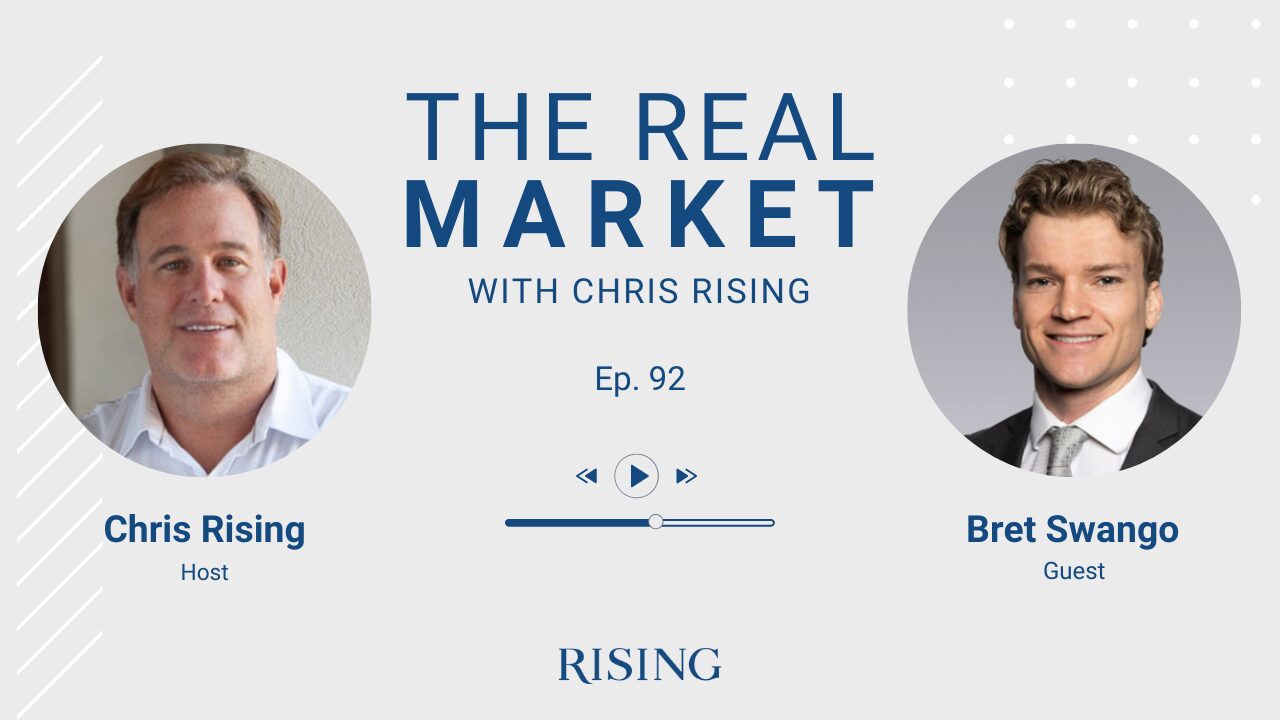
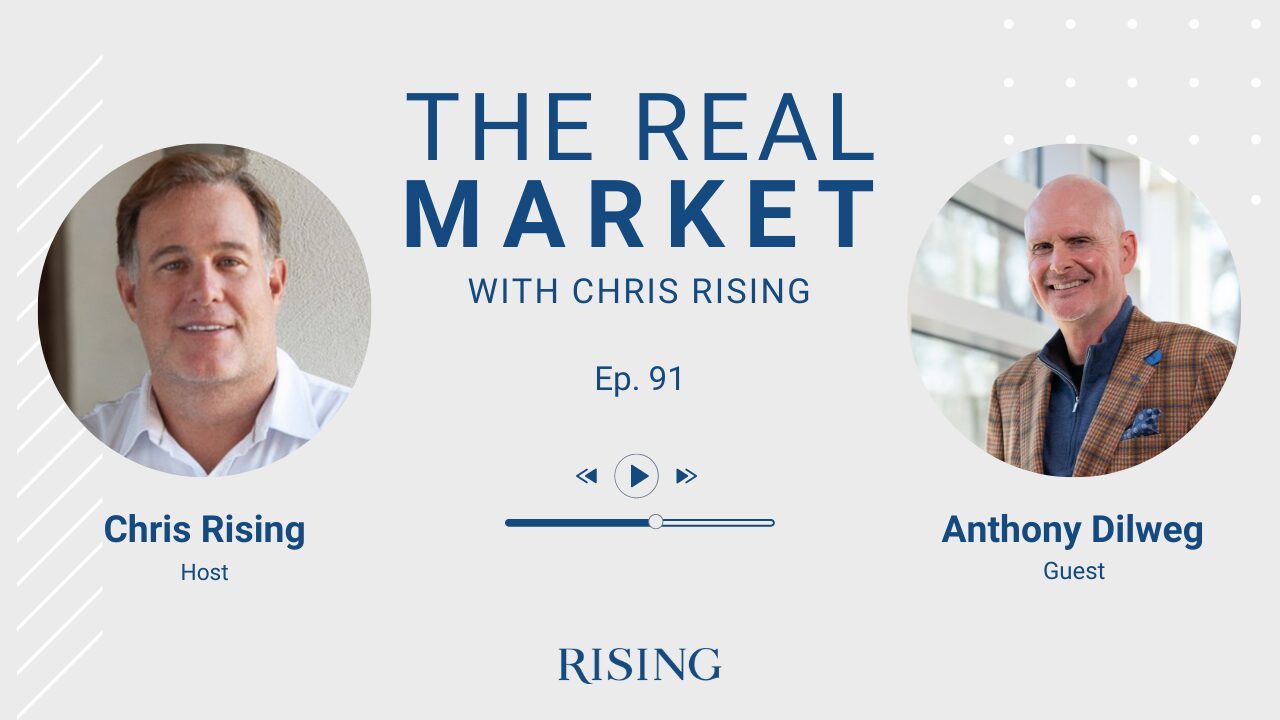
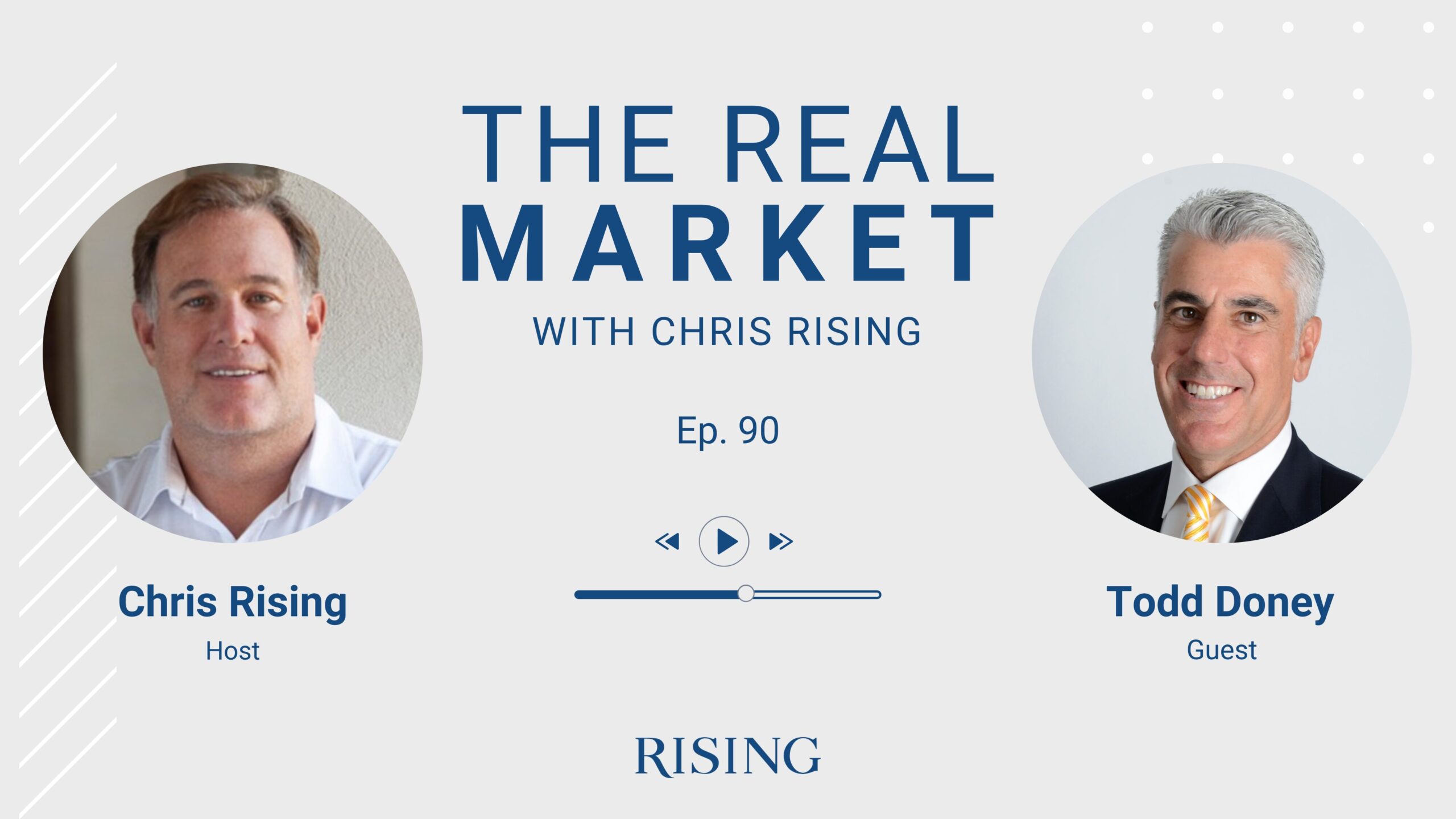
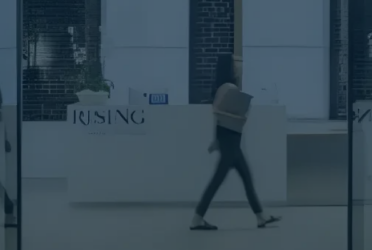
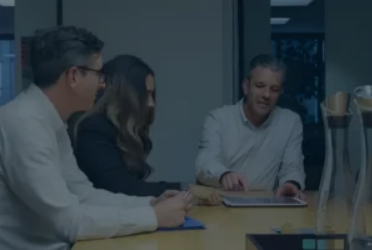
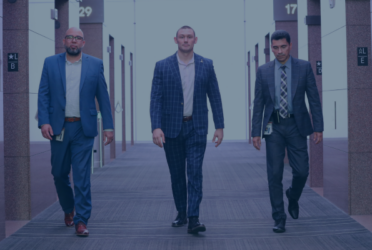
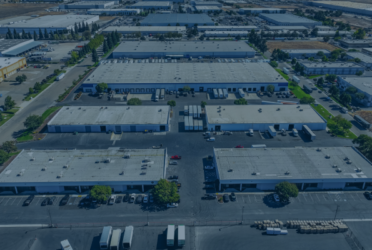
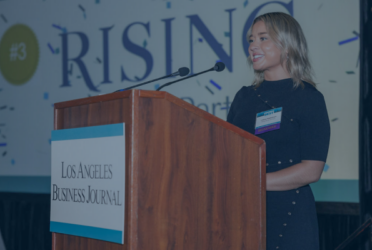
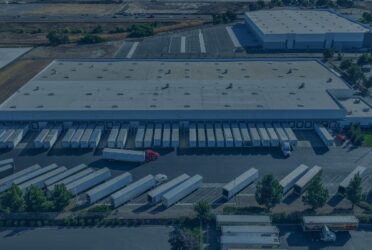
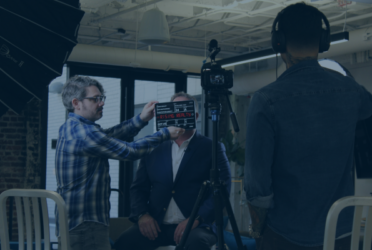
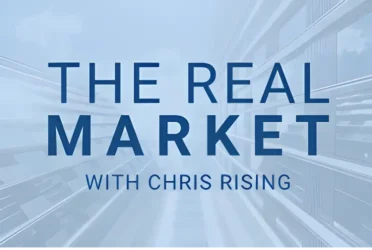 Podcast
Podcast